Río Gallegos: gateway to Patagonia Austral See map
Who claim that Río Gallegos is the gateway to Patagonia Austral are not wrong. Starting point for all tours, it has become the tourist center of excellence scale.
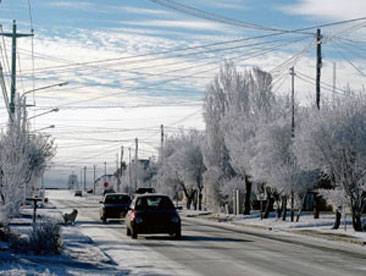 In winter the streets are dressed in white.
In winter the streets are dressed in white.But Río Gallegos is not only a central step. Its history, great cultural movement and nearby natural attractions make it a major tourist center.
The town is situated at the mouth of the river with the same name, is the capital of the province of Santa Cruz and head of department Güer Aike. It has just over 80,000 inhabitants.
Its geographical position, determines a mild dry climate with considerable temperature ranges to be in the cold temperate region of the country. Temperatures range from -15 °C in winter and 25 °C in summer. The winds are constant, as can be expected in Patagonia, where gusts can reach 120 km/h in its worst days.
Its history
The first historical news of the current Río Gallegos back to the mission of Jofre de Loaiza in 1525, when he reached the river ldefonso (now Gallegos river) and to the one led by Simón de Alcazaba in 1535, who first called it Gallegos.
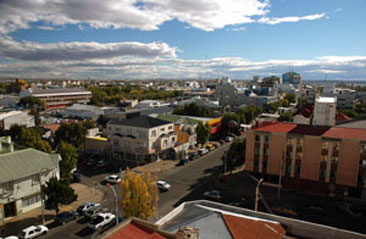 Panaroma view of the city center. Photo courtesy Horacio Cordova.
Panaroma view of the city center. Photo courtesy Horacio Cordova.The first signs of population are higher. The particular precedent comes from the administration of Carlos Moyano, who in 1883 was appointed governor of Santa Cruz territory.
Río Gallegos born, finally, to settle there the maritime sub-prefecture in 1885. Its fate was apparently very modest but it has a very important purpose so that indicating a willingness to maintain and exercise Argentine sovereignty over these distant lands.
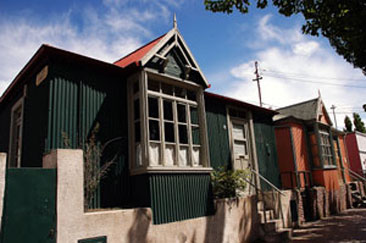 Part of the distinctive architecture of Río Gallegos.
Part of the distinctive architecture of Río Gallegos.Currently Río Gallegos, is the second largest city in the Patagonia coast and the largest in the province. 13 km from the coast and 38 km along the National Route 40 is the last continental deepwater port, President Arturo Illia, turning the city into an important industrial and commercial center.
As the largest city of the province, it has important receptive equipment ranging from three star hotels to hostels, apart hotels and 2 campings. Also, the dining options are numerous.
In the city you can walk the waterfront, visit museums or simply stroll the streets enjoying the intense commercial, cultural and recreational activity.
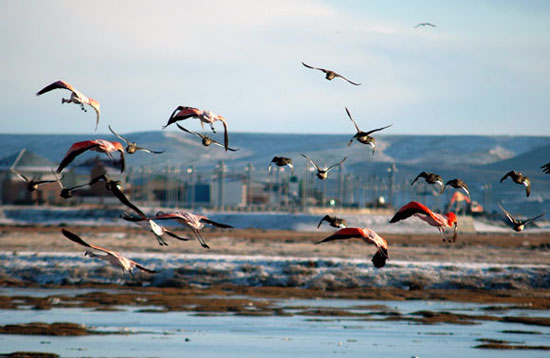 Beside the port you can see variety of birds including flamingos. Photo courtesy Horacio Cordova.
Beside the port you can see variety of birds including flamingos. Photo courtesy Horacio Cordova.Connectivity and access
From the north of the country, Río Gallegos can be reached by National Route 3, which binds the entire Atlantic coastal axis ending in the province of Tierra del Fuego. The International Airport is located 7 kilometers from downtown and operates several companies linking this capital to other destinations in the country.
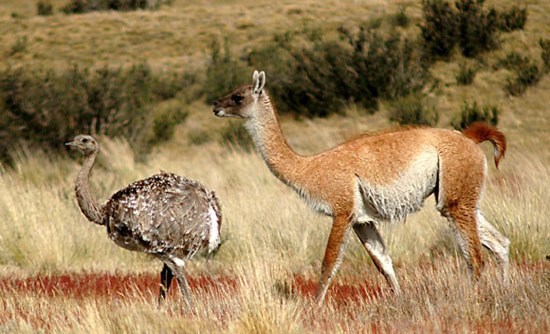 Part of the Patagonian fauna is composed of guanacos and rheas (also called Choiques). Photo courtesy Horacio Cordova.
Part of the Patagonian fauna is composed of guanacos and rheas (also called Choiques). Photo courtesy Horacio Cordova.
Information provided by Secretary of Tourism of the town, located on Roca Avenue and Cordova. Phone: (+549 02966) 436920. Mail: turismo@riogallegos.gov.ar
Viajes por la Patagonia
Related Articles
© Patagonia.com.ar 2025 | Todos los derechos reservados.
